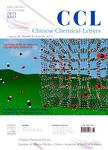Hyperbranched polyamidoamine protective layer with phosphate and carboxyl groups for dendrite-free Zn metal anodes
作者机构:Key Laboratory of General Chemistry of the National Ethnic Affairs Commission School of Chemistry and Environment Southwest Minzu University School of Materials Science and Engineering Guangdong University of Petrochemical Technology Institute of smart city and intelligent transportation Southwest Jiaotong University
出 版 物:《Chinese Chemical Letters》 (中国化学快报(英文版))
年 卷 期:2024年第35卷第10期
页 面:521-525页
核心收录:
学科分类:080503[工学-材料加工工程] 0808[工学-电气工程] 08[工学] 0805[工学-材料科学与工程(可授工学、理学学位)] 0703[理学-化学]
基 金:financially supported by the National Natural Science Foundation of China (No. 22209134) the Southwest Minzu University Research Startup Funds (No. RQD2021097)
主 题:Functional groups Hyperbranched polyamidoamine Surface chemistry Zn anode Zn metal batteries
摘 要:Zinc metal is regarded as one of the most promising anodes for Zn-based batteries in next-generation energy storage systems. However, the dendrite growth and interfacial corrosion lead to poor reversibility and cycle life of Zn anodes. Herein, we synthesize a 2-phosphate-1,2,4-butane tricarboxylic acid modified hyperbranched polyamidoamine containing rich terminal groups of phosphate and carboxyl(HPC) as modified layer for the Zn anodes. Importantly, the in situ acid-etching promotes the exposure of(002)Zn plane and the generated salt-polymer complexes could be adhered to the Zn anodes tightly. This greatly favors the uniform deposition of Zn and inhibits interfacial corrosion. Consequently, stable HPC@Zn anode plating/stripping for over 1200 h at a high areal capacity of 4 mAh/cm2and a current density of 4 m A/cm2is obtained. This study provides a new avenue of hyperbranched polymer in interfacial design for highly reversible and stable Zn metal anodes.



